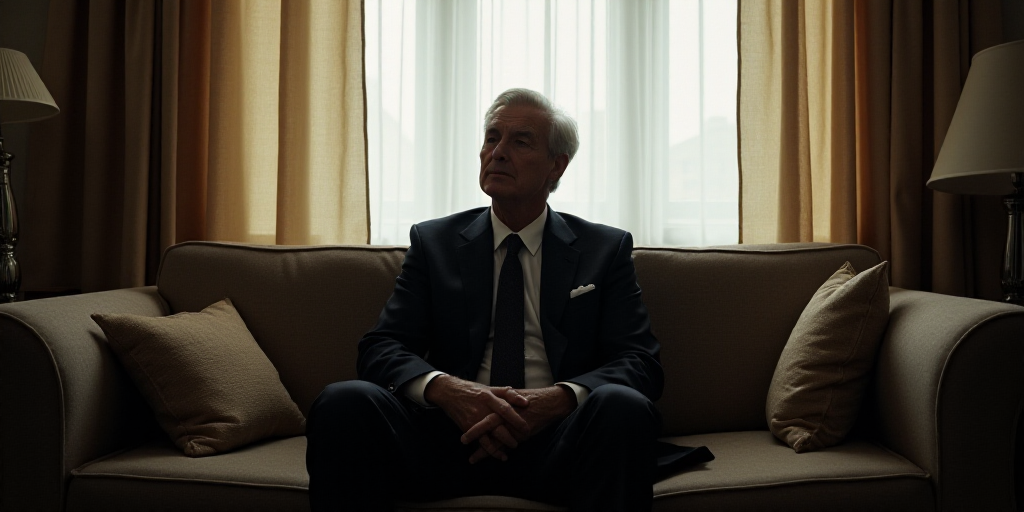The Quiet Revolutionary
Giorgio Armani revolutionized fashion with his unstructured silhouettes, challenging decades of sartorial tradition. In an era where shoulder pads dominated runways and men’s suits adhered to rigid Victorian codes, Armani proposed something radically different: sophistication through simplicity.
His genius lay in understanding that true luxury didn’t shout, it whispered. Armani’s jackets, with their relaxed structure and fluid lines, liberated both men and women from the constraints of extreme formality. Essentially, it was the concept of discreet elegance transformed into a multimillion-dollar empire.
Dressing the Dreams of Millions
Armani is recognized for inventing red carpet fashion, an achievement that transcends the textile industry to enter the realm of popular culture. From Richard Gere in American Gigolo to today’s stars, the Italian designer understood that dressing Hollywood meant dressing the dreams of millions.
His creations didn’t just adorn bodies; they constructed characters, defined eras, and set global standards of aspiration. Each Armani suit on screen became a silent manifesto on what it meant to be elegant, powerful, and desirable.
Armani helped define the ‘made in Italy’ slogan as a synonym for quality for consumers, elevating Italian manufacturing to world-renowned prestige. His contribution extends beyond fashion: he was a cultural ambassador who exported Mediterranean sophistication to global markets, from Tokyo to New York.
The Armani empire isn’t just a testament to commercial success, but of how a coherent artistic vision can transform into a lasting cultural phenomenon.
The Maximal Minimalist
In an industry obsessed with ostentation, Armani embraced sobriety as a creative philosophy. His neutral palettes, exquisite textures, and impeccable cuts demonstrated that one could be revolutionary through subtlety. Each garment was an exercise in subtraction: eliminating the unnecessary to reach the pure essence of design.
This minimalist approach wasn’t coldness, but distilled warmth. His garments enveloped the user in a second skin of confidence, transforming clothing from mere attire to psychological armor.
For over five decades, Armani shaped modern elegance with a visionary clarity that extended far beyond fashion. His influence spans from the architectural design of his boutiques to the lifestyle philosophy he represented: beauty found in simplicity, power expressed with moderation.
As the fashion world processes this irreplaceable loss, it’s clear that Giorgio Armani didn’t just dress bodies; he dressed an era. His legacy will endure in every silhouette celebrating elegance over exhibition, in every piece preferring subtlety to shouting, in every designer understanding that true revolution sometimes arrives whispering.
CEO and Sole Shareholder
The Armani empire wasn’t just a brand, but a meticulously structured financial ecosystem. The business architecture mirrors the strategic vision of its founder: Giorgio Armani as the flagship of haute couture, Emporio Armani positioned in the accessible luxury segment, and Armani Exchange capturing the youth market.
This segmentation allowed the group to penetrate multiple demographics without cannibalizing its own brands. In an industry dominated by conglomerates like LVMH and Kering, Armani stood as an exception: he was both CEO and sole shareholder, maintaining absolute control over his creative vision and commercial strategy.
This independence wasn’t just ideological, but financially astute. Without external shareholder pressures, the group could maintain healthy margins and consistently reinvest in its global infrastructure.
The company might be worth between 6 billion and 7 billion euros today. Regardless of the exact figure, Armani has solidified his place as one of the most successful entrepreneurs in fashion history.
Strategic Expansion Beyond Textiles
Armani’s financial brilliance was evident in his ability to diversify. The company operates a range of cafes worldwide and plans, in collaboration with Emaar Properties, to launch a luxury hotel chain and resorts in major cities like New York and Tokyo. This expansion is a logical extension of a brand that had transcended fashion to become synonymous with an aspirational lifestyle.
Armani’s business expanded into music, sports, and Italian gastronomy, creating a brand ecosystem that reinforced each other and maximized the value of intellectual property.
While other luxury groups suffered from market volatility, Armani demonstrated exceptional resilience. The Italian luxury group grew its revenues by 16.5% in 2022 despite market volatility. The group’s conservative strategy, maintaining a cash reserve of over a billion, allowed it to navigate economic crises without external funding or strategic partners.
This liquidity not only provided stability but also negotiation power and investment capacity during downturns.
A Business Model Others Tried to Copy
Armani’s financial success wasn’t a fluke. His model combined vertical production control, strategic geographical expansion, and brand management that maximized the price of superior quality.
Today, as the fashion world processes this loss, financial analysts recognize Armani not just as a designer but as a strategist who built one of the most profitable and stable businesses in the luxury sector.
His ability to maintain margins over 20% for decades, expand globally without losing brand identity, and resist sectorial consolidation pressures makes his legacy a mandatory case study for any business school.
The empire Armani leaves behind isn’t just a set of assets but the embodiment of a vision that understood true luxury isn’t bought, it’s built. Brand by brand, store by store, season after season.






